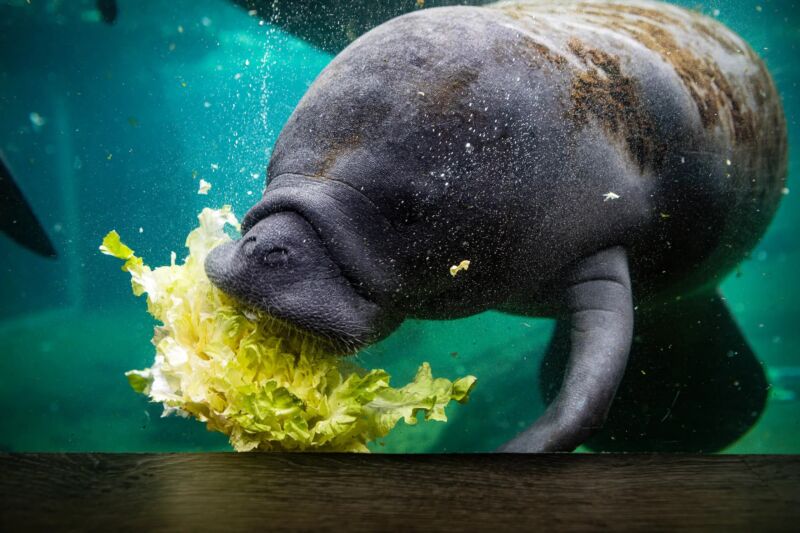
Enlarge (credit: Eva Marie Uzcategui/Getty Images)
Few vignettes show how much human activity has affected wildlife more than the scene at Florida Power & Light’s plant in Cape Canaveral. Hundreds of manatees bask in an intake canal on its southeast edge, drawn by the warm waters. These manatees are hungry. Pollution has decimated their usual menu of seagrasses in the Indian River Lagoon. Many have starved: 1,101 died in Florida in 2021, and as of December, 2022’s official estimate was nearly 800 deaths. So along the canal, members of the Florida Fish and Wildlife Conservation Commission are tossing them lettuce.
“It's just emblematic of how dire the situation is,” says Rachel Silverstein, the executive director of environmental nonprofit Miami Waterkeeper. “The point where we would need to artificially feed a wild animal because their ecosystem is so destroyed that they cannot find food for themselves is pretty extreme.”
The supplemental feeding program began in early 2022 and restarted this winter, because of the persistence of what marine mammal experts call an “unusual mortality event.” “It probably kept the manatees alive,” says Silverstein of the feeding program, “but it's not a sustainable condition for manatees in the long term to need to rely on an artificial food source.”
No comments:
Post a Comment